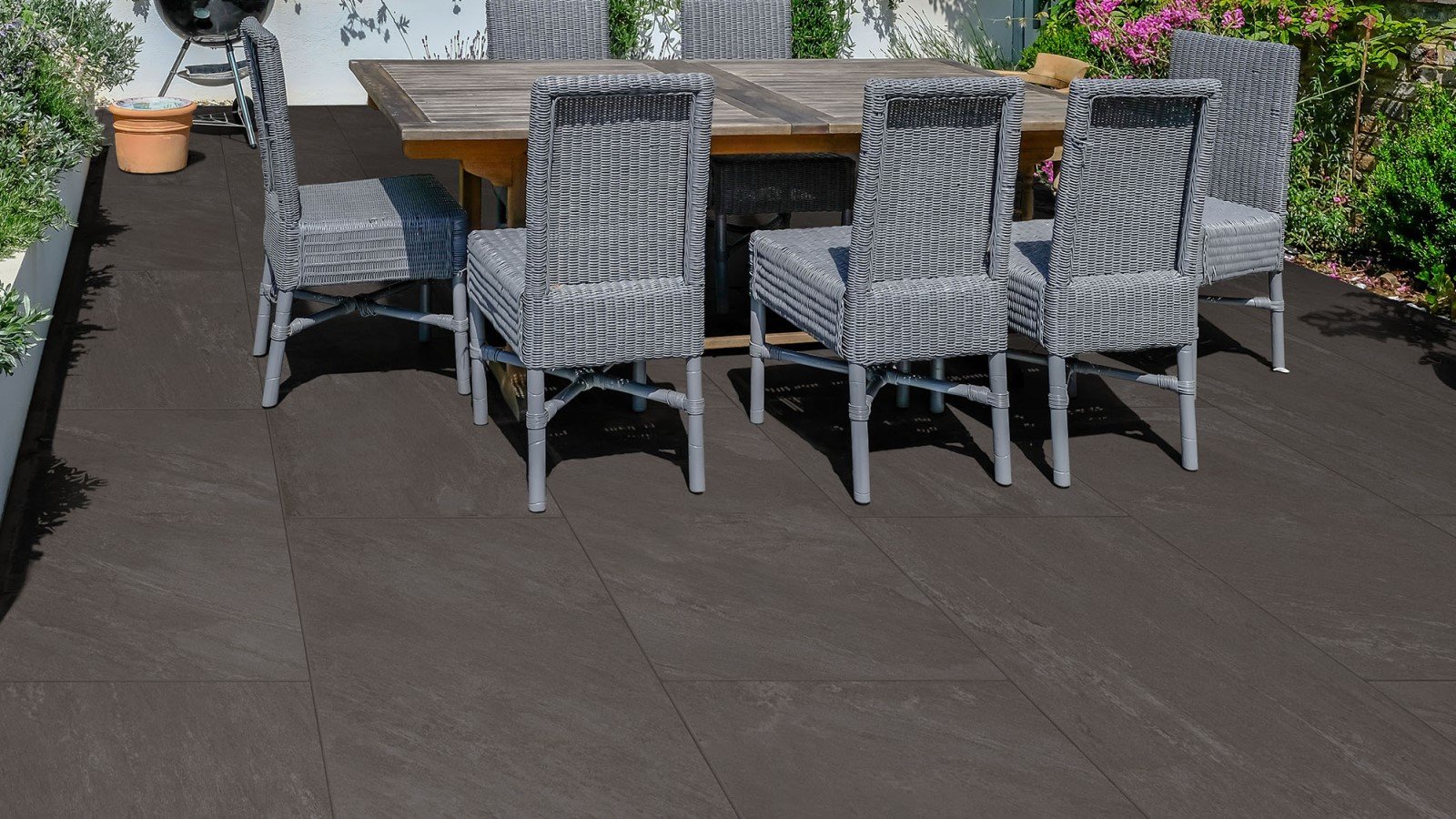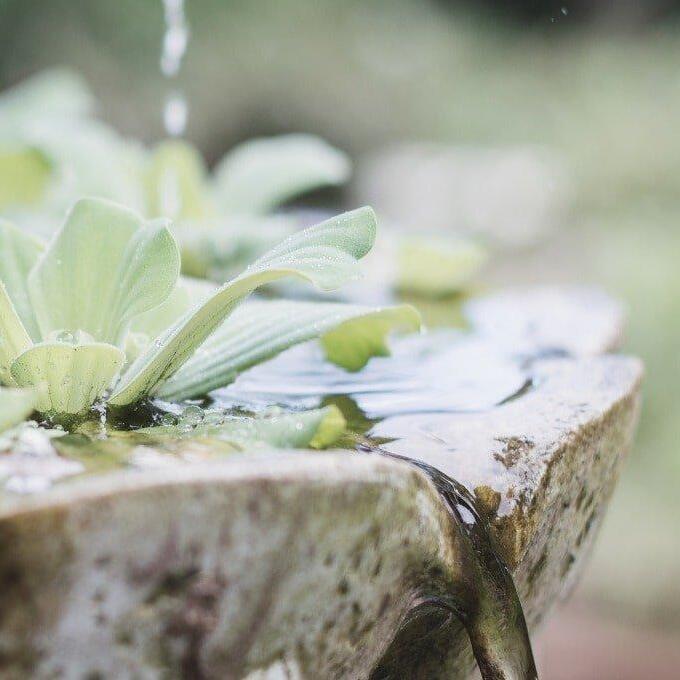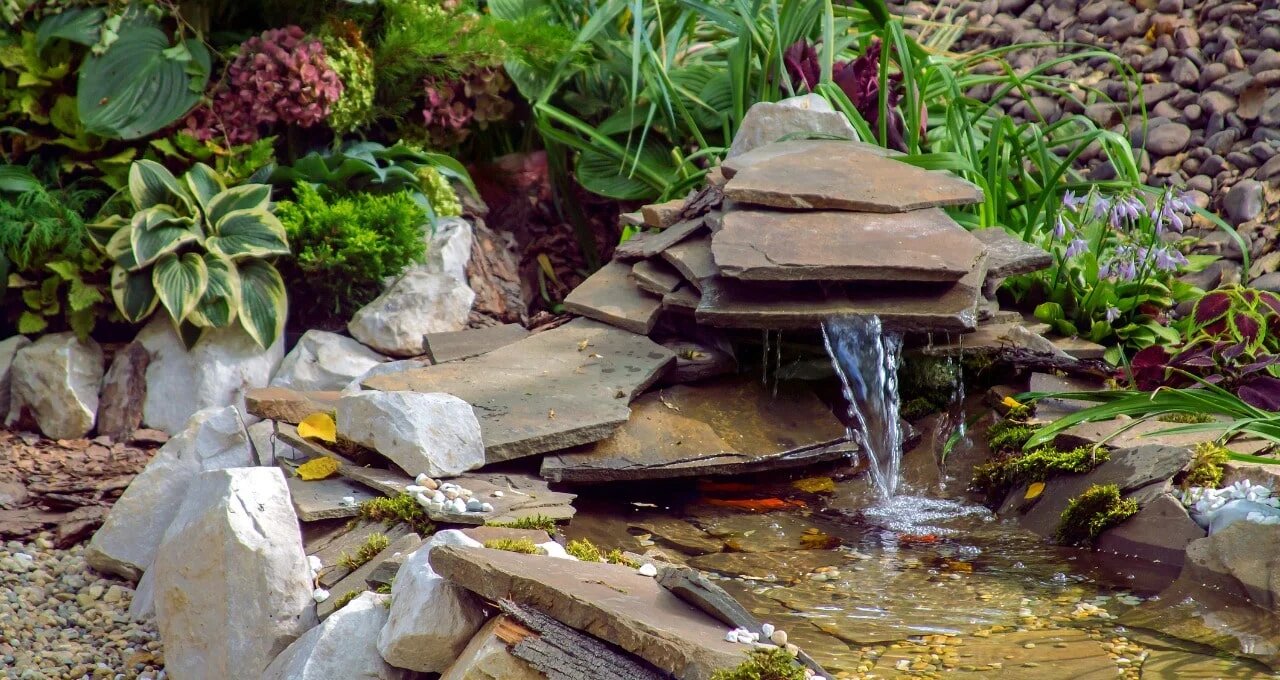How to build a patio water feature
Tell your neighbours you’re adding a water feature to your garden and they’ll gasp. “They don’t come cheap, you know?” they’ll echo in unison, while poking their heads over your fence, envious of your expensive tastes.
But what if you could deliver the same wow-factor with your new water feature – but without the prolific price tag? That’s right, it’s possible.
From cascading to solar, tidal and waterfall, there are a myriad of DIY water features at your disposal. And all without any costly and time-consuming drilling or pipework.
Can’t wait to get stuck in? Read below for our top DIY water feature ideas.
How to build a DIY solar water feature
Looking to make your garden more environmentally-friendly? Well, when you build this solar water feature yourself, you get a trifecta of eco-benefits. Not only do you reduce the need for new products, but you are also repurposing old materials (in this case, old plant pots) and using solar power rather than an electricity source.
Are you ready to try building it yourself? Here’s how it’s done.
What you need:
- One excess paver (a small size is fine)
- Spirit level
- Two plant pots (one small, one large)
- One plastic bucket (small enough to fit into the largest pot)
- Plastic lid (a large paint-tub lid is ideal)
- Folded newspaper
- River rocks, gravel or pebbles
- Solar-powered fountain pump
- Galvanised wires (optional)
- Wire cutters (optional)
How to make an easy DIY water feature:
- Set your ground level using an excess paving stone and check with a spirit level.
- Now, set the largest pot you have on top of the stone and insert the plastic bucket into the base of the pot.
- Cover the rim of your pot and the bucket with a plastic lid. If necessary, cut the lid slightly smaller than the rim’s diameter as you will need a slight gap between the top of your pot’s rim and the plastic lid (this is where decorative rocks will be going later).
- Stack the smaller pot on top of the plastic lid, creating a tiered effect. Remember to cover over any drainage holes with folded newspaper.
- Now, fill the rim around your large pot with rocks, gravel or pebbles so that your plastic lid is completely covered.
- Finally, fill your smaller pot with water and drop your floating solar water pump into the water. To stop the pump from floating off-centre, insert galvanised wires into the pump’s foam flotations. You may need to cut the wires to ensure the device stays in place.
How to build a DIY mini waterfall
Waterfall garden features can fetch upwards of £1,000 when you buy them readymade –and that’s just for the very basic types. But, when you make a waterfall feature yourself, you slash the costs and you can give yourself a well-deserved pat on the back. And who doesn’t love the satisfying feeling of a job well done?
Try out the below to enjoy your own mini pond and waterfall, rolled into one.
What you need:
- Shovel
- Measuring tape
- Rope/garden hose
- Spirit level
- Tamper
- Landscaping fabric
- Pond liner
- Circular pavers
- Water supply tube
- Aquarium waterfall tank
- Bucket of water
- Stone chippings/aggregate
- Water pump
- Pump basket
- Lava rock
- Filtration bag
How to do it build an easy DIY mini pond & waterfall:
- Firstly, dig your pond hole around 300mm deep, laying out the shape with a rope or garden hose. Remember, this is the hole for the water. Surrounding stone will extend 600mm beyond the edge and the waterfall components will cover 900mm behind the pond.
- As you dig, toss the soil towards the back and sides of the pond. Carve 300mm-wide ledges (to prevent cave-ins) and ensure sides slope inwards. Similarly, carve the bottom of the hole so that it slopes slightly towards the edge of the pond furthest from the waterfall (aim for a fall of 1 in 1) to ensure drainage. Check with a spirit level to be sure.
- Level the rim of the hole and compact surrounding soil with a tamper.
- Now, lay landscaping fabric and rubber liner over the hole, ensuring approximately 300mm of excess over the rim of the pond.
- Push the fabric and liner into the hole and, when ready, fill the hole with water, working out the wrinkles as the pond fills.
- Now you can line your pond with your circular pavers, either directly on the liner or on top of pea gravel. Be sure to hang the pavers over the water’s edge by a few centimetres to hide the liner on the inside.
TOP TIP: To make things easier, ask that your circular pavers are split in advance, so that you receive just the outer circle. You won’t need to worry about jagged edges or cutting slabs in this case.
- As you build the stone edge, drape the excess liner against the stones and pile soil against it to hide the fabric outside of the pond.
- Once your stones are at their desired height, connect the supply tube to the waterfall tank and attach the liner to the tank. Set the tank over well-packed stones, with the outlet resting on the waterfall ledge.
- Set your waterfall ledge stone in place (again, this needs to be a large, flat slab), ensuring a large portion of it hangs over the edge.
- Gradually pour a bucket of water over the ledge stone to test that water flows away and into the pond. For extra tilt, consider adding stone chippings or aggregate.
- Build up stone around the waterfall ledge, hiding the tank with soil or stone. You will also want to cap the tank with a stone that’s large enough to cover it but small enough to move as you will need to access this for repairs.
- Connect the water pump to the supply tube, set in a pump basket and add lava rock, attaching to the farthest part from the waterfall. This helps to circulate water before being pumped back in.
- Place the filtration bag in the tank and start the pump – and watch that water flow!
Feeling inspired to put your DIY skills to the test? To get started, browse the Simply Paving range or contact us for extra assistance with your paving projects.






















































